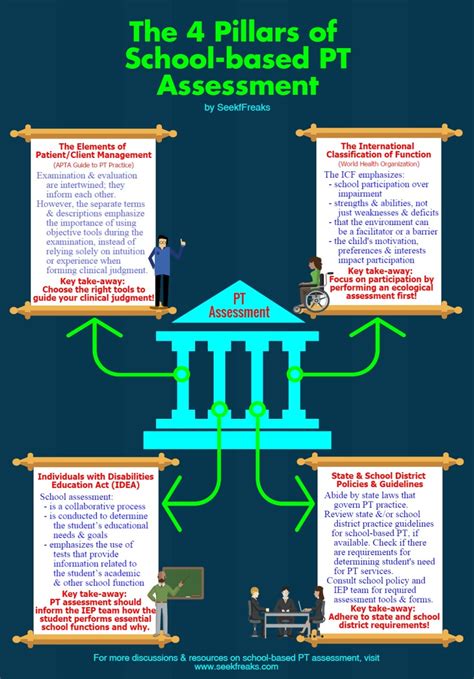PT School: A Realistic Assessment
Physical therapy (PT) school is a demanding but rewarding path for those passionate about helping others regain their mobility and improve their overall health. However, the reality of PT school often differs from the idealized image many prospective students hold. This article provides a realistic assessment of what to expect, addressing common questions and concerns.
Is PT School Right for Me? A Self-Assessment
Before diving into the rigorous curriculum, honest self-reflection is crucial. Consider these key factors:
- Are you genuinely passionate about helping people? This career demands empathy, patience, and a deep commitment to patient well-being.
- Can you handle high-pressure situations and demanding workloads? PT school is known for its intense academic rigor and long hours.
- Do you possess strong problem-solving and critical thinking skills? You'll need to analyze patient cases, develop individualized treatment plans, and adapt to changing circumstances.
- Are you comfortable with science and anatomy? A solid foundation in biology, chemistry, and physics is essential.
- Can you manage the financial burden of tuition and living expenses? PT school is expensive, and financial planning is crucial.
What are the prerequisites for PT school?
Many aspiring PTs wonder what the application process entails. Generally, you'll need:
- A bachelor's degree: While the specific major isn't always mandated, a strong science background is strongly recommended. Common majors include biology, kinesiology, and exercise science.
- High GPA: A competitive GPA is typically required, often above a 3.5.
- GRE scores (check individual school requirements): While some schools are moving away from this requirement, many still consider GRE scores as part of the application process.
- Observation hours: Most programs require a significant number of observation hours in a physical therapy setting. This provides firsthand experience and allows you to assess your suitability for the profession.
- Letters of recommendation: Strong letters from professors, mentors, and physical therapists are crucial.
- Personal statement: This is your opportunity to showcase your passion for physical therapy and highlight relevant experiences.
What is the curriculum like in PT school?
The curriculum is rigorous and comprehensive, encompassing:
- Basic sciences: Anatomy, physiology, kinesiology, and pathology are fundamental.
- Clinical sciences: This covers various aspects of patient care, including examination, diagnosis, and treatment planning.
- Clinical practice: Extensive clinical rotations in diverse settings are a core component of the program. These provide hands-on experience and allow you to apply your knowledge in real-world scenarios.
What kind of classes are included in a PT program?
PT programs include a wide array of courses covering both the theoretical and practical aspects of physical therapy. These courses often include, but aren't limited to: musculoskeletal anatomy and biomechanics, neuromuscular physiology, cardiopulmonary physical therapy, pediatric physical therapy, geriatric physical therapy, neurological rehabilitation, and various clinical practicums.
How long is physical therapy school?
Physical therapy school typically lasts three years for Doctor of Physical Therapy (DPT) programs. Some accelerated programs may offer completion in a shorter time frame, but this often means a more intense course load.
What are the job prospects after PT school?
The job market for physical therapists is generally strong. Graduates can find positions in a wide range of settings, including:
- Hospitals: Providing inpatient and outpatient rehabilitation services.
- Clinics: Offering specialized care for specific conditions or patient populations.
- Private practices: Working independently or as part of a team.
- Outpatient rehabilitation facilities: Treating patients with various musculoskeletal and neurological conditions.
- Schools: Working with students with disabilities.
What is the average salary for a physical therapist?
The average salary for a physical therapist varies based on location, experience, and specialty. However, it's generally a well-paying profession, offering a good work-life balance for many practitioners. Salaries can differ significantly across states and between urban and rural settings. Researching salary data specific to your region is recommended.
What are the challenges of being a physical therapist?
While rewarding, the profession presents challenges:
- Physically demanding: The work can be physically demanding, requiring prolonged periods of standing, bending, and lifting patients.
- Emotionally taxing: Working with patients facing significant health challenges can be emotionally draining.
- Administrative burdens: Significant time may be spent on paperwork and administrative tasks.
This realistic assessment aims to provide a comprehensive overview of physical therapy school and the profession. While the path is demanding, for those with the passion, dedication, and resilience, it can be incredibly rewarding. Remember to thoroughly research individual programs and carefully consider your personal strengths and weaknesses before embarking on this journey.

